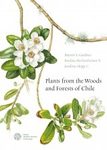World / Checklist Flora / Fauna Identification Key
By: Roy Watling(Author), Norma M Gregory(Author), PD Orton(Contributor)
131 pages, 7 plates with 152 b/w line drawings, includes loose colour identification chart
![British Fungus Flora, Part 7: Cortinariaceae p.p. British Fungus Flora, Part 7: Cortinariaceae p.p.]()
Click to have a closer look
About this book
Customer reviews
Related titles
About this book
From the introduction:
"Cortinariaceae is an extremely large family and apart from a few peripheral genera is a well-defined group. It has been conveniently split into two major sections based on the colour of the spore-print: those with rust-coloured spores (Cortinarieae) and those with dull brown-coloured spore-print (Inocybeae). The former includes the extremely large genus Cortinarius, with over 350 species in Britain, and a series of satellite genera.
Orton has produced keys to several sections of Cortinarius (subgenus Myxacium, Phlegmacium, Sericeocybe and Cortinarius), and the hygrophanous members are the subject of a forthcoming work. This present part of the Flora deals with the other outstanding members of the group except Pholiota and those species with thin-walled collapsing spores, viz. Tubaria and Flammulaster. Although some of the genera dealt with herein are very close, others are not so and an alphabetical arrangement is adopted. Rozites is very close to Cortinarius and is mycorrhizal, but habitats are very diverse and the family includes parasites as in Phaeocollybia and saprophytes as in Gymnopilus, Galerina and other genera; species of Galerina also occur on mosses or on burnt ground. Members of the last genus often fruit in inhospitable places on mountains and in exposed, rather base-poor communities. More careful observations on the bryophytes in which Galerina spp. grow should be made, for there are some indications that they are only associated with certain species of moss and liverwort. Although Simocybe has priority over Phaeocollybia (Donk, 1962) the latter has been conserved by international agreement.
The genus Pleuroflammula with its single British species, although pleurotoid, has, for completeness, been included in the text, along with Phaeogalera and Stagnicola.
Pholiota is not dealt with here and because of the presence of chrysocystidia in many members of the genus it has been associated with the Strophariaceae (see Part 5 of the Flora). It will be dealt with in a future part. However, Pholiota mutabilis, transferred to a separate genus (Kuehneromyces) by Singer & Smith, is included here in Galerina with other lignicolous, hygrophanous species. Flammulaster and Tubaria are associated with the Crepidotaceae by some authors (see Part 6 of this Flora)."
Customer Reviews
World / Checklist Flora / Fauna Identification Key
By: Roy Watling(Author), Norma M Gregory(Author), PD Orton(Contributor)
131 pages, 7 plates with 152 b/w line drawings, includes loose colour identification chart






































